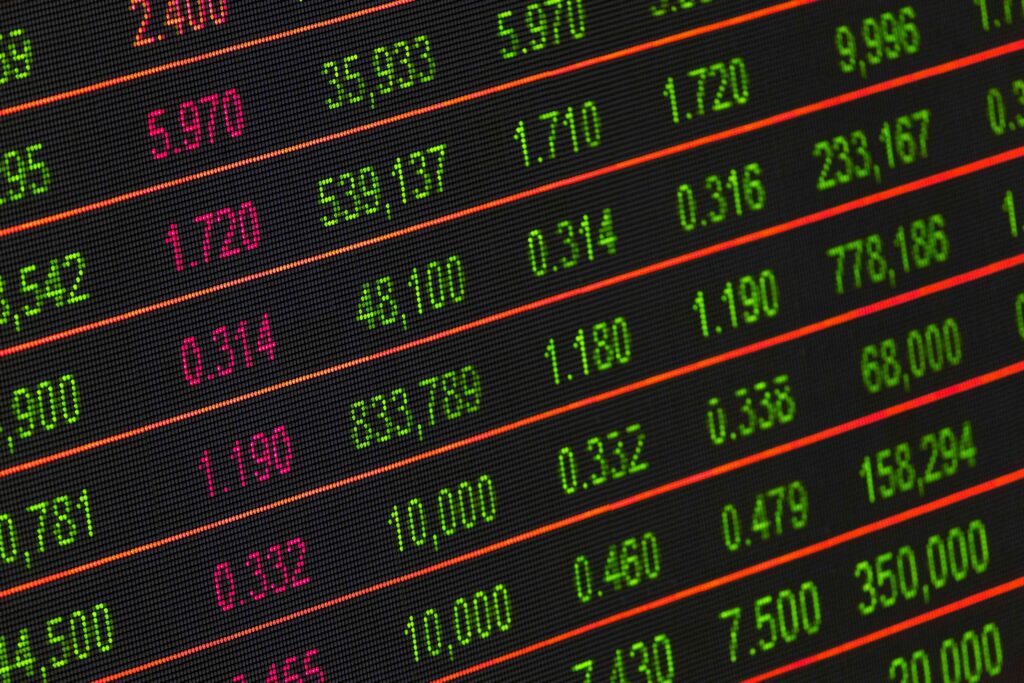Forex markets start the third week of March with some transformative movements in the foreign exchange sector.
Leaders guiding monetary policy, traders, and investors have their fingers primed as a busy week of crucial central bank meetings gets underway.
From the US Federal Reserve to the Bank of Japan, they all provide key decision points that could sway how currencies trade around the globe.
The World Bank’s announcement on March 18 of a massive $6 billion credit line to Egypt also underscores how currency moves and economic fortunes hinge on exercises in policy adjustments amid a backdrop of surging yields, rising interest rates, and fears of local economic slowdowns.
Forex: US Dollar holding steady
The dollar held fairly steady on March 18 as investors awaited a flurry of central bank meetings this week, including a widely expected end to the Bank of Japan’s negative interest rate policy.
The week ahead also included updated forecasts on the likelihood of a US interest rate cut from the Federal Reserve.

This week sees central bank meetings in Britain, Australia, Norway, Switzerland, Mexico, Taiwan, Brazil and Indonesia.
Overseas, the dollar fell slightly this week on a basket of six other major currencies, registering a 0.029% fall to stand at 103.430.
In 2024, the index has increased by around 2% so far as the US economy has outperformed predictions and investors have reset expectations of the pace and depth of Federal Reserve rate cuts in 2024.
Market expectations have been ratcheted down to anticipate as many as three cuts of 25 basis points by December, already down from expectations seen at the start of the year.
There is around a 60% chance of the first cut by June, according to LSEG data.
On March 20, the more salient question could be whether the Fed’s policymakers lower their forecasts for rate cuts, or dot plots, next year, which in December stood at 75 basis points in 2024.
Forex: Japanese Yen in Focus
However, the yen held steady, gaining 0.09% to trade at 149.21 to the dollar.
The greenback had earlier slipped to 150.88 to the yen, after a volatile January and early February, before jumping to a one-month peak of 146.48 at the start of March. This is thanks partly to better-than-expected economic data and expectations that the Bank of Japan will end its eight-year-old negative-rate policy sooner rather than later.
Smaller wage rises at big Japanese companies confirmed views that the Bank of Japan could be about to exit from its easy-money policy, maybe as soon as its Tuesday meeting.
Forex trading: Currencies contracting
Others contracted as well: the euro inched up 0.05% to $1.0893 and the British pound dropped 0.04% to $1.2735 ahead of Thursday’s Bank of England meeting, where it is expected to hold rates at 5.25%.
Australia’s central bank is predicted to do the same in its scheduled meeting on March 19, and the Australian dollar rose a scant 0.10% versus the greenback to $0.657.
The greenback also added 0.09% to the Swiss franc, as traders speculated that the Swiss National Bank will cut its interest rates on Thursday following continuing low inflation that remains under its 0-2% target range.
Forex Trading: South African Rand & CPI
The rand fell at the beginning of a week with several high-profile financial events, such as the release of South African inflation figures and several key central bank interest rate decisions, on Monday.
The rand stood at 18.9650 against the dollar, 1.15% lower than its March 15 close.
Elsewhere, in the United States, the greenback eked up by 0.03% on a separate basket of international currencies.
Interest rate announcements are expected this week from the central banks of the United States, Japan, Britain, and Australia, all likely to keep policy unchanged.
Forex trading: SA inflation stats
South Africa will mostly be looking to the February inflation statistics, to be released on March 20.
A relatively dovish tone in the Fed minutes later in the week could help the Rand.
Furthermore, the 2030 benchmark government bond in South Africa saw a decrease, with 12 basis points rising in its yield to 10.485%.

Forex – Markets up, and USD Yields high
On the stock market, the Top-40 index, which measures the mining sector, finished the day 0.74% lower, and the all-share index, which is broader, also fell 0.77%.
With the exception of Japan, stock multiples have remained lofty.
The strategists are watching the 10-year US Treasury yield area of 4.35% for hints of a higher sensitivity in the stock screen, according to the report.
The 10-year yield was sitting just below the level at 4.32%.
With the Federal Reserve and the Bank of Japan set to make policy decisions this week, the bond market is likely to become even choppier.
Morgan Stanley’s big question of the week: Will we finally start to see the direction of rates have more of an impact on the valuations of large-cap equities?
The S&P 500’s forward price-to-earnings ratio, a common valuation metric, currently sits at 20.5, just shy of a two-year high.
With the major index up roughly 8% in 2024, these presumably high cash flows are looking less appetizing.
Forex trading: High yields
Higher yields mean that risk-free Treasury bonds become more compelling, and that’s when stock valuations can feel pressured.
As strategists point out, small-cap stocks are more negatively correlated to yields than large caps, and small caps could create more volatility in response to higher rates.
The strategists will also be keeping a close eye on whether the 10-year yield can break below the 200-day average of around 4.195%, with the idea that a large break below the two-quarter average could keep equity valuations elevated.
Forex Trading: Bank of Japan to raise interest rates
The Bank of Japan (BOJ) is expected to weigh in with an interest rate increase near Tuesday’s policy meeting.
But hedge funds have slightly lower, though still substantial, short positions on the yen, which isn’t encouraging.
Market players seem skeptical that a modest BOJ rate increase, the country’s first in 17 years, would do much to boost the near-term outlook for the yen.
Ending eight years of negative interest rate policy (NIRP) and turning down the heat on a long-term ‘continuous commitment’ to defeating a decade-long deflation in Japan reflected a long-awaited departure from the prior monetary regime.
Forex trading: Negative interest rates
Finally exiting the era of negative rates on short-term lending, this suggests a winding down of the BOJ’s extraordinarily aggressive policy of more than $2 trillion in asset purchases.
Even with the prospect of yen purchases, it alone isn’t likely to do much to lift the beleaguered currency out of its plunge in the absence of other actions – and substantial reductions in yen yield spreads against other currencies, including the US dollar.
Forex: Market clue for BoJ
Other clues will likely come via BOJ Governor Kazuo Ueda’s announcement on Tuesday and his accompanying policy statement, as well as from the US Federal Reserve’s statement and press conference with Fed Chair Jerome Powell on March 20.
In the meantime, for all the yen-positioning, traders are not fully sold on the idea that Japan’s first steps toward policy normalization will radically alter the yen’s direction.
As per data from the Commodity Futures Trading Commission for the week ending March 12, net short yen positions were cut by 16,521 contracts, down to 102,322.
The cut in bearish yen positions comes on the back of an almost 14,000 contract decrease in the preceding week, the first two-week loss in a bearish position since the third week of February and its highest reading of the year so far.
Moreover, the adjustment this time around reflects about a 20% cut from the position hit in late February, the highest bearish position on the yen since April 2008 and a leveraged bet of around $8.65 billion worth of the Japanese currency weakening.
Still, before one gets too complacent about a reversal, some sobering thoughts: the move into net short yen has been on an uptrend since mid-January, with a doubling of bearish positions barely 13 weeks ago.
Notwithstanding these tweaks, a meaningful shift in market sentiment towards the yen requires a catalyst.
Forex trading: Policy shift
Given that the BOJ will likely tread gingerly with its policy shift and Japan is expected to increase interest rates by a minimal 25 basis points only this year, important changes in the value of the yen appear to depend on broader shifts in the US-Japan interest rate and yield differentials.
Looking forward, this trend implies that we need the US market to defeat the false prophets among the FX experts who talk so fantastically about another direction for the Federal Reserve on rate cuts and then for JPY to overcome its technical dimensions to follow this US market shift, to power dramatically higher on a further closing of the yield gap between US and Japanese two-year yields.
In the current environment, it would take more than a 10 basis point narrowing of that gap, which currently carries two-year US yield at 2.44% and two-year Japanese yield at minus 10 basis points.
Egypt gets a bailout
The World Bank Group said on Monday it was pledging more than $6 billion in support to Egypt over the next three years. The funds are due to to help the world’s most populous Arab nation overcome foreign currency shortages and large budget and balance of payments deficits.
The aid comprises $3 billion earmarked for government programs and another $3 billion for the private sector, although it needs the group’s board to approve the money.
This package of support comes as Egypt last month secured its loan deal with the International Monetary Fund (IMF)—its third since December, to which the IMF added $5 billion to its support for Egypt – as well as the European Union’s recent commitment to provide Egypt with €8.1 billion in financing.
Probably the most momentous event on the economic front, Egypt’s central bank announced on March 6 the devaluation of the pound and embrace of a more flexible exchange-rate regime.
A year ago, in the wake of the popular revolt, it had also abandoned a fixed exchange-rate regime against the dollar.
Much of it – up to $1 billion which the World Bank’s country director for Egypt, Stephane Guimbert, said would be disbursed over three years – will be used for budget support, used by the government to fulfill its most immediate obligations, along with investments in climate projects and SMEs.
The rest (that is, $3 billion) is to be allocated through the International Finance Corporation (the private sector arm of the World Bank Group) via equity and loans, although this tranche will also include funding from other investors.
Guimbert noted that the programme is intended to support state-owned enterprises not earmarked for privatisation to ‘improve their governance and performance in a fair competitive environment’ with the private sector.
Funds will also be used in Egypt’s social protection schemes such as Takafol and Karama as well as for water and agriculture projects.
Egyptian authorities have started to sell off assets, hoping to mobilise the private sector and earn hard currency, promising to make every year over the next four years a total of $10 billion from private investment in state assets.
In one move only last month, Egypt earned $35 billion by auctioning off development rights for the Ras al-Hikma peninsula for the Emirati sovereign wealth fund ADQ.
The World Bank Group alone has several billion dollars of commitments in ongoing operations in Egypt: the International Bank for Reconstruction and Development ($4.296 billion), the IFC ($1.957 billion), and the Multilateral Investment Guarantee Agency ($30 million).






